As Mark Murphy ’25 taps out line after line of code, he’s not just building a video game—he’s helping redefine how students learn biology.
“It’s great. We’ve gotten to use a lot of technologies that you hear about in class—tools that software developers use in the real world," Murphy said.
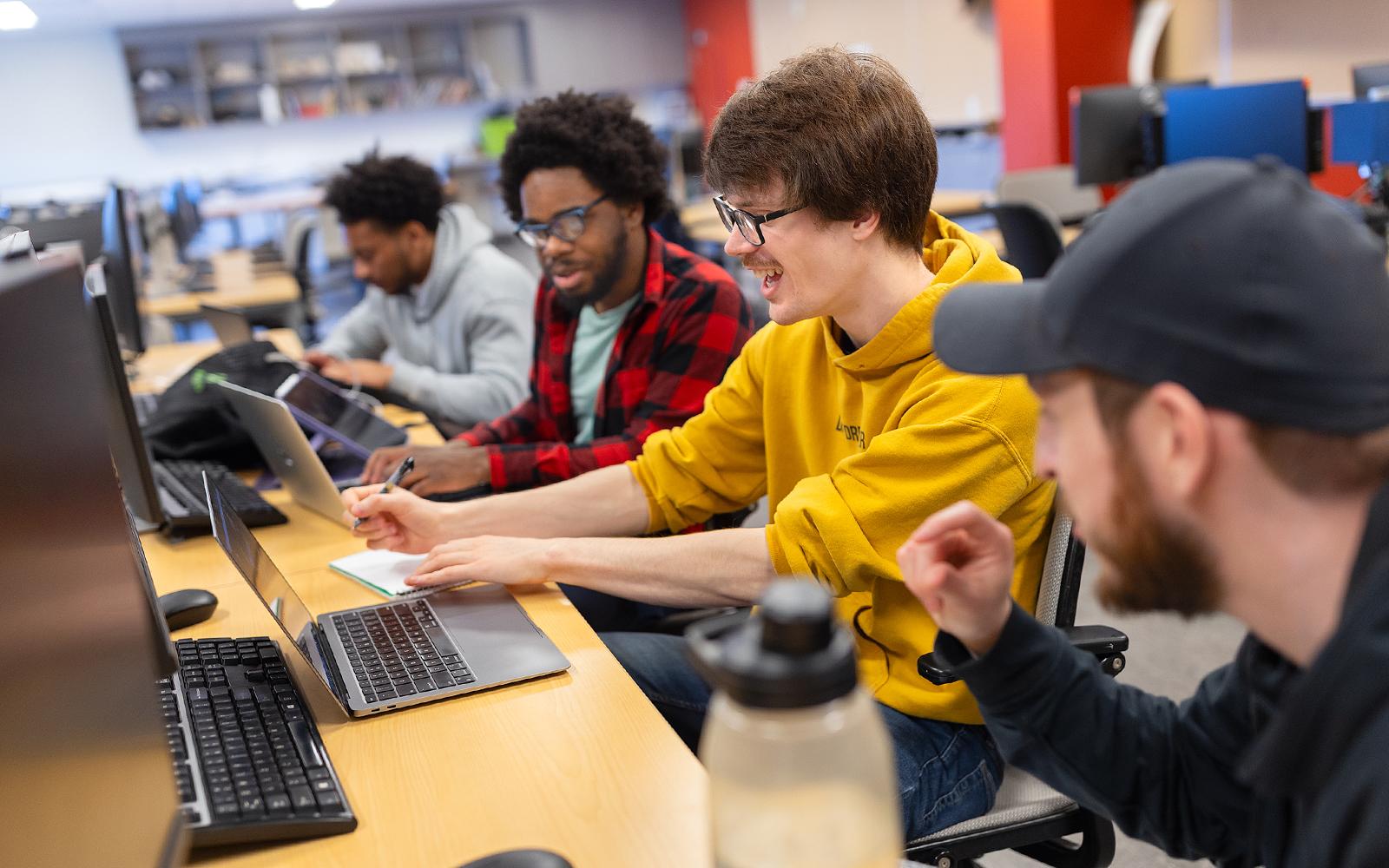
Mark Murphy ’25, center, works with his classmates in his Software Engineering class to design a robust educational game for high school biology students.
This semester, eight upper-level computer science students in Dr. Laura Grabowski’s Software Engineering course are creating a fully functional educational video game called Game of Cells. Designed for high school biology students in Texas, the game is scheduled for a Beta release by the end of the semester. The goal? To make complex cellular biology concepts interactive, engaging, and easier to understand.
“I had the idea of doing an educational game,” said Dr. Grabowski. “I happen to have a good relationship with a high school biology teacher in Austin, Texas, so I asked her what might be useful for her students. She came up with the concept for Game of Cells. She’s been attending our review sessions on Zoom as often as possible, giving the students real-time feedback. The communication and interaction are important parts of the methodology that we’re teaching."
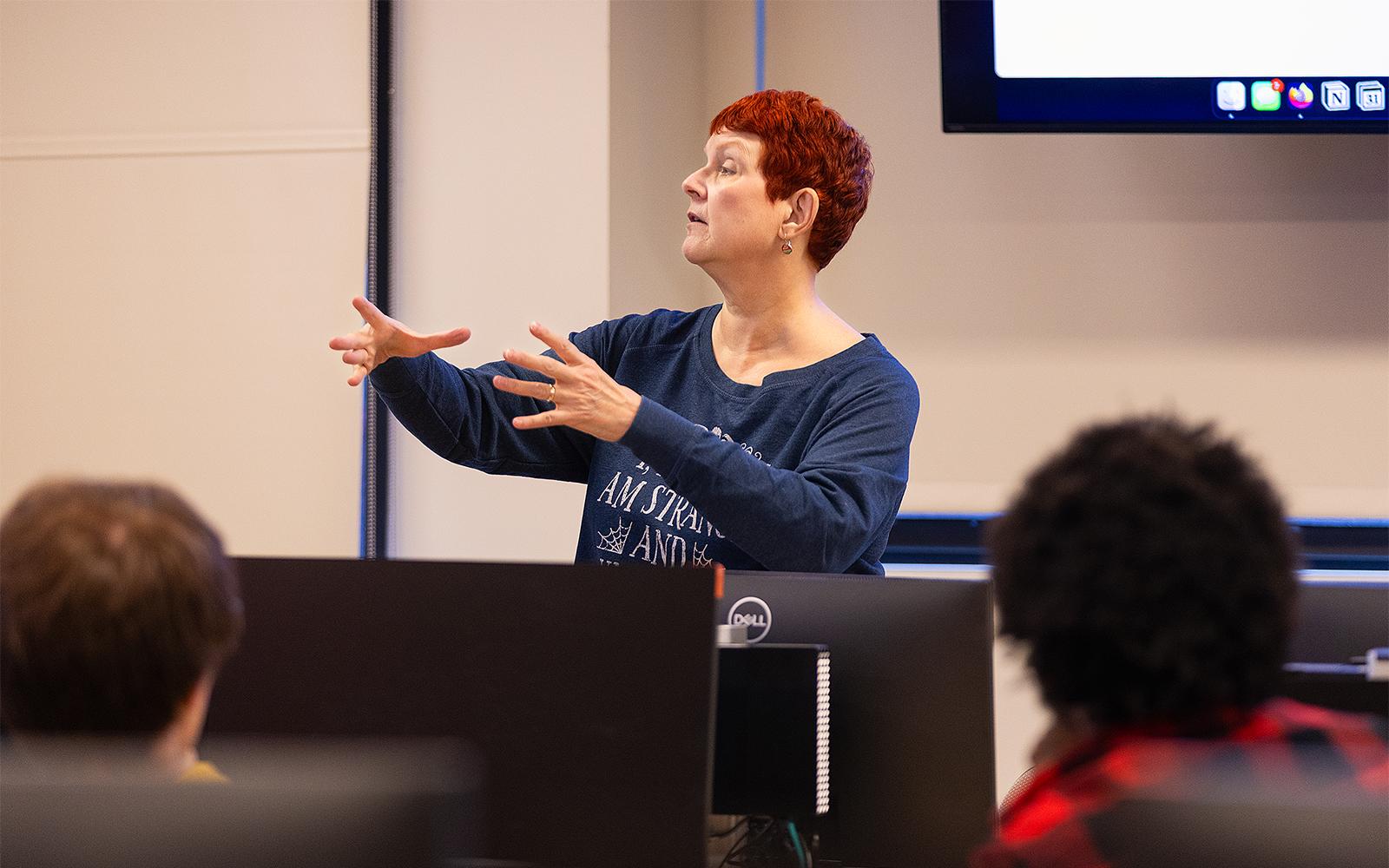
Dr. Laura Grabowski leads her Software Engineering class.
Structured as a capstone course, Software Engineering gives students the opportunity to dive deep into one substantial project, working collaboratively from concept to implementation. With Game of Cells, the stakes go beyond the classroom—their finished product will be used by real students in real classrooms.
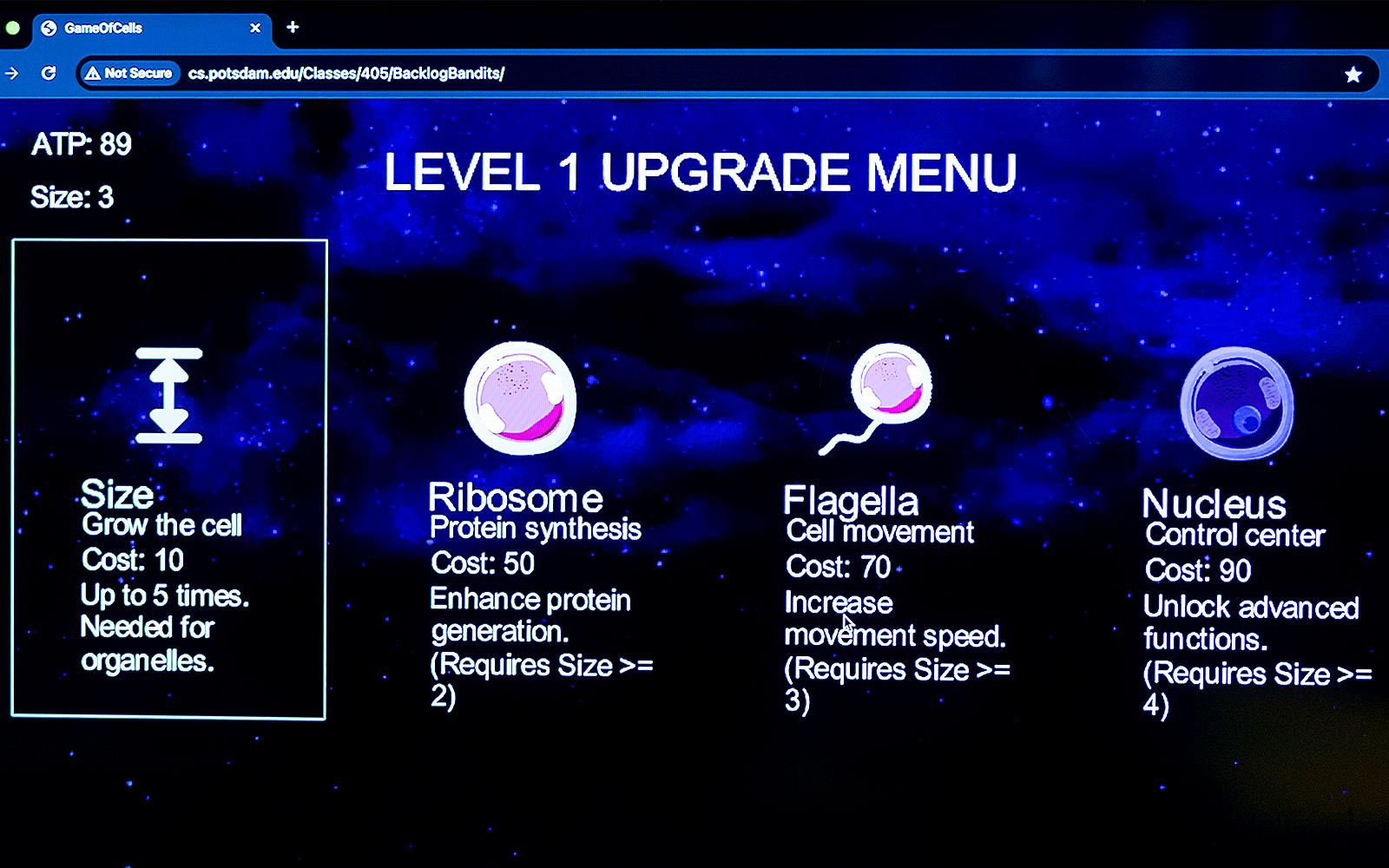
“Game of Cells is all about making biology more accessible and fun,” said Tega Omarejedje ’25. “The player controls a single cell in a challenging environment and must manage resources like ATP and organelles to survive. So, while the game is fun and visually playful, it’s also designed to reinforce key ideas like cellular function, adaptation, and resource management.”
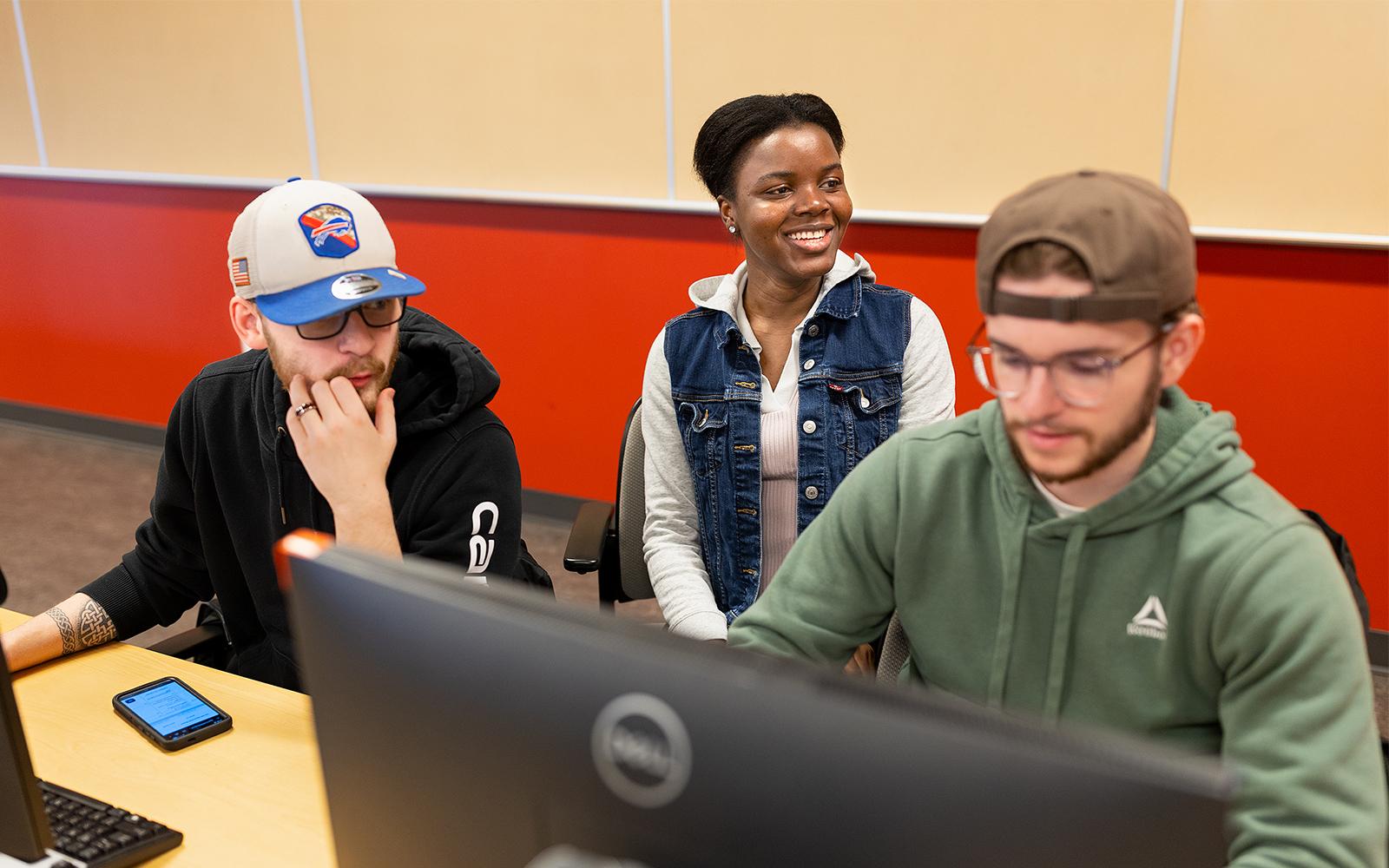
Tega Omarejedje ’25, center, works with her classmates in her Software Engineering class.
Students meet multiple times each week to discuss progress and troubleshoot challenges. Weekly review sessions with Dr. Grabowski and fellow professor Dr. Brian Ladd help guide development. To simulate a real-world software company, the class follows the Scrum methodology—an agile approach to software development. Dr. Grabowski acts as Scrum Master, while Dr. Ladd steps in as the product owner, representing the biology teacher when she isn’t available.
“Scrum is a real-world methodology,” Grabowski explained. “You work in short sprints, show your progress, and constantly refine the product. Every week, the students present working software. They’re using industry-standard tools and techniques—exactly what they’ll encounter after graduation.”
For senior Tim Hackney ’25, the class offers direct preparation for what’s next. A member of the New York Army National Guard, Hackney will transition into a full-time role as a Server Administrator upon graduation, supporting battalion-level or higher operations overseas.
“I’ll be setting up servers, managing file shares—basically making sure everything works smoothly for the unit,” he said. “The Computer Networks course and the hands-on experience I’ve gotten at SUNY Potsdam, combined with my military training, have set me up really well.”
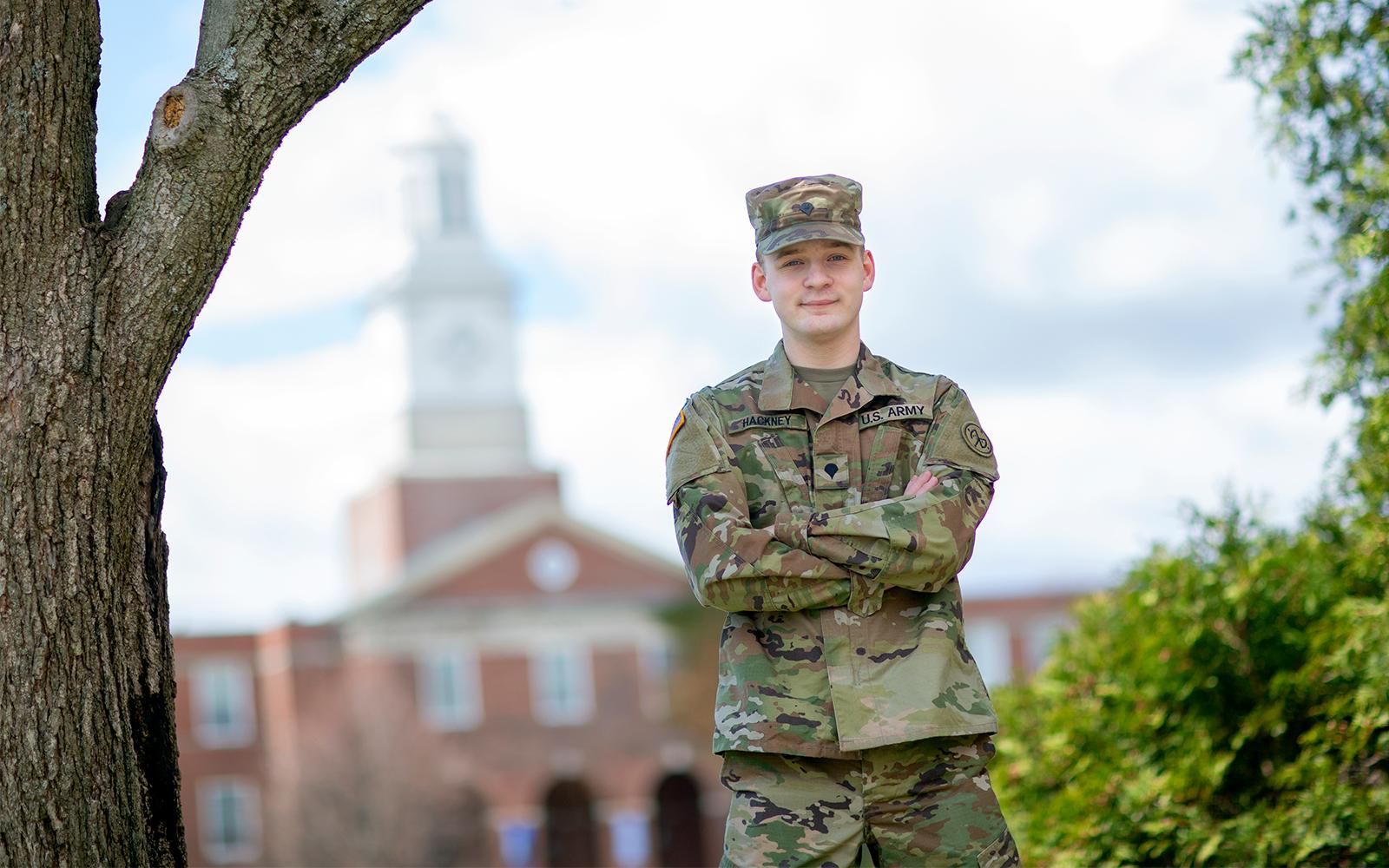
Tim Hackney '25 will be using his computer science skills overseas once he graduates in May.
Back in the lab, Hackney works closely with Murphy, Omarejedje, and the rest of the team, preparing the game for its Beta release. Once complete, high school biology students will use the software as an innovative learning tool.
“The hands-on structure of the course makes a big difference,” Omarejedje said. “It’s one thing to learn about software engineering principles, but getting to apply them in a real-world style project really cements the knowledge. It’s boosted my confidence for working on larger-scale projects after graduation. I’m planning to pursue a career in software engineering, and this class has definitely helped me feel more prepared for the collaborative and problem-solving aspects of the field.”
Article and photos by Jason Hunter
